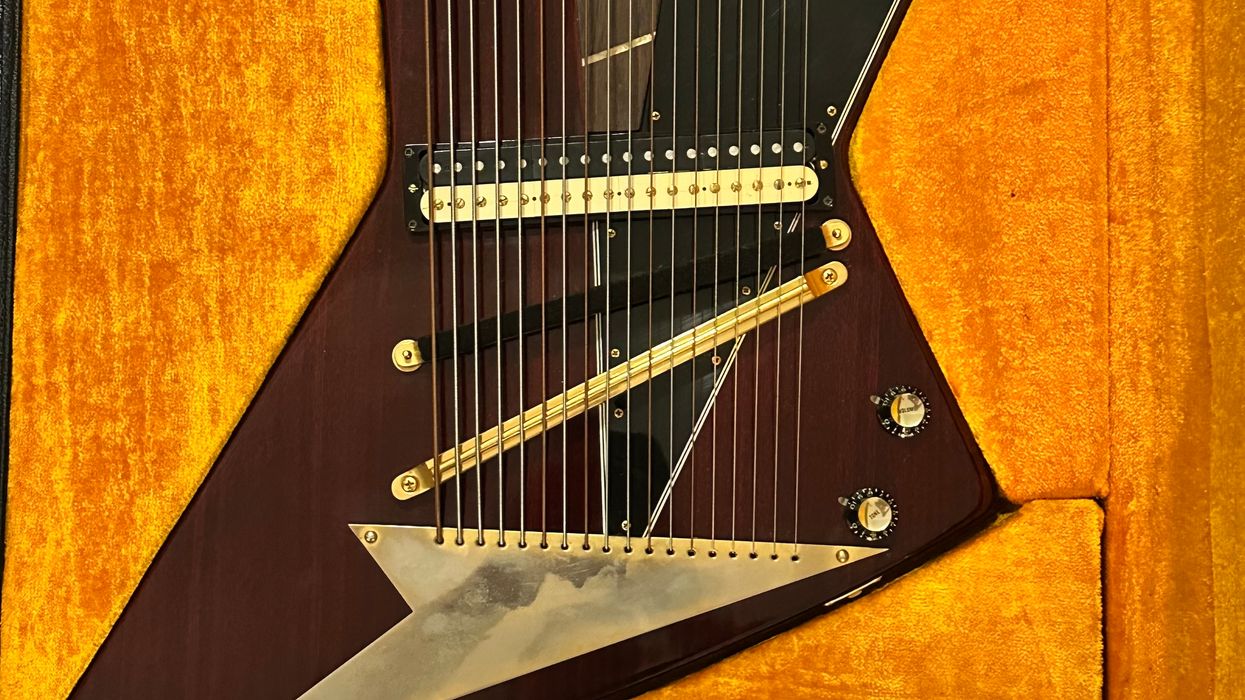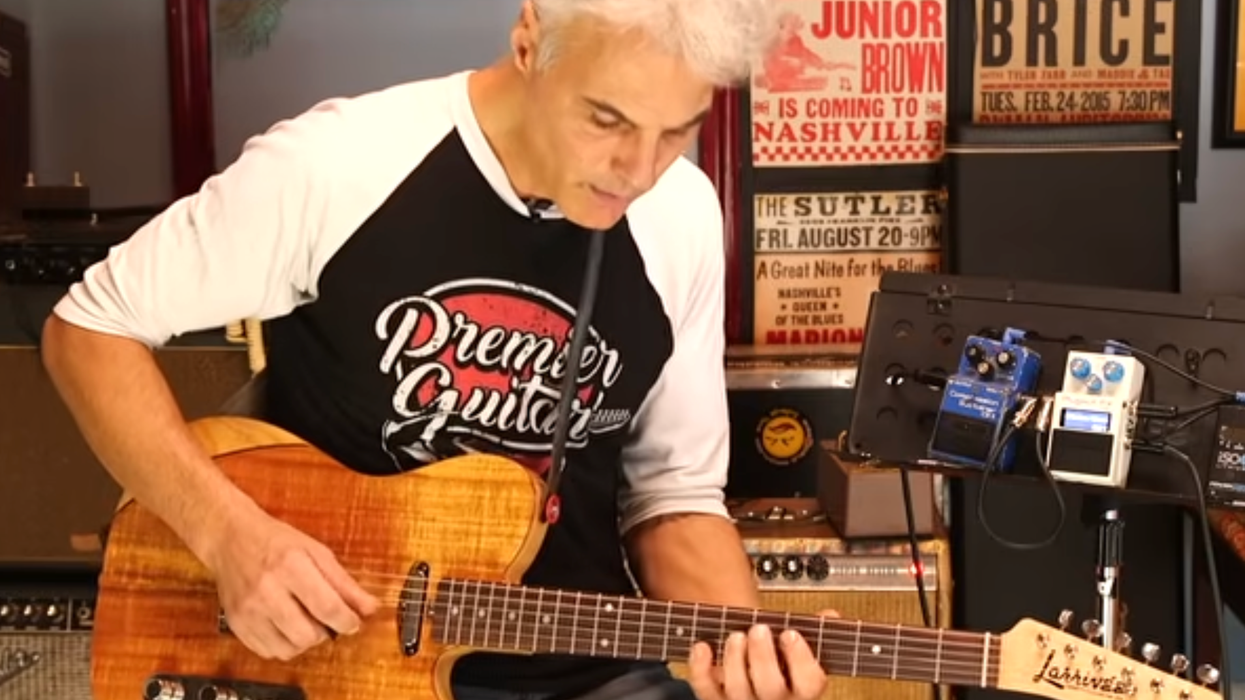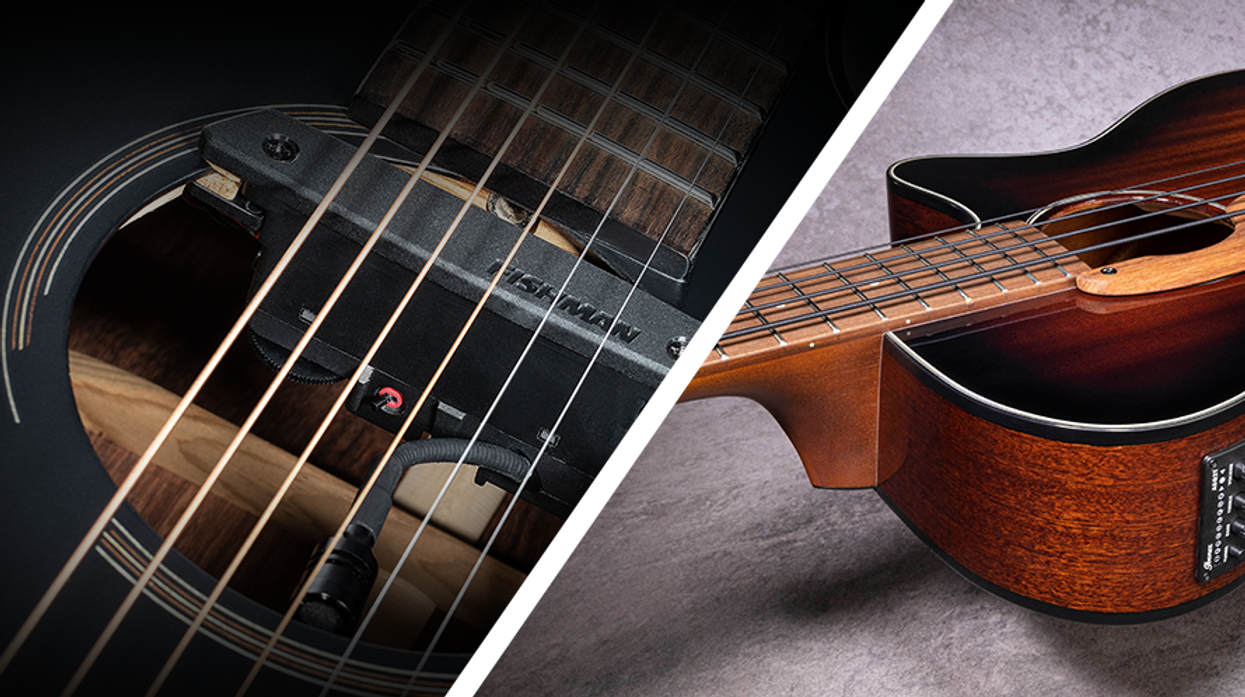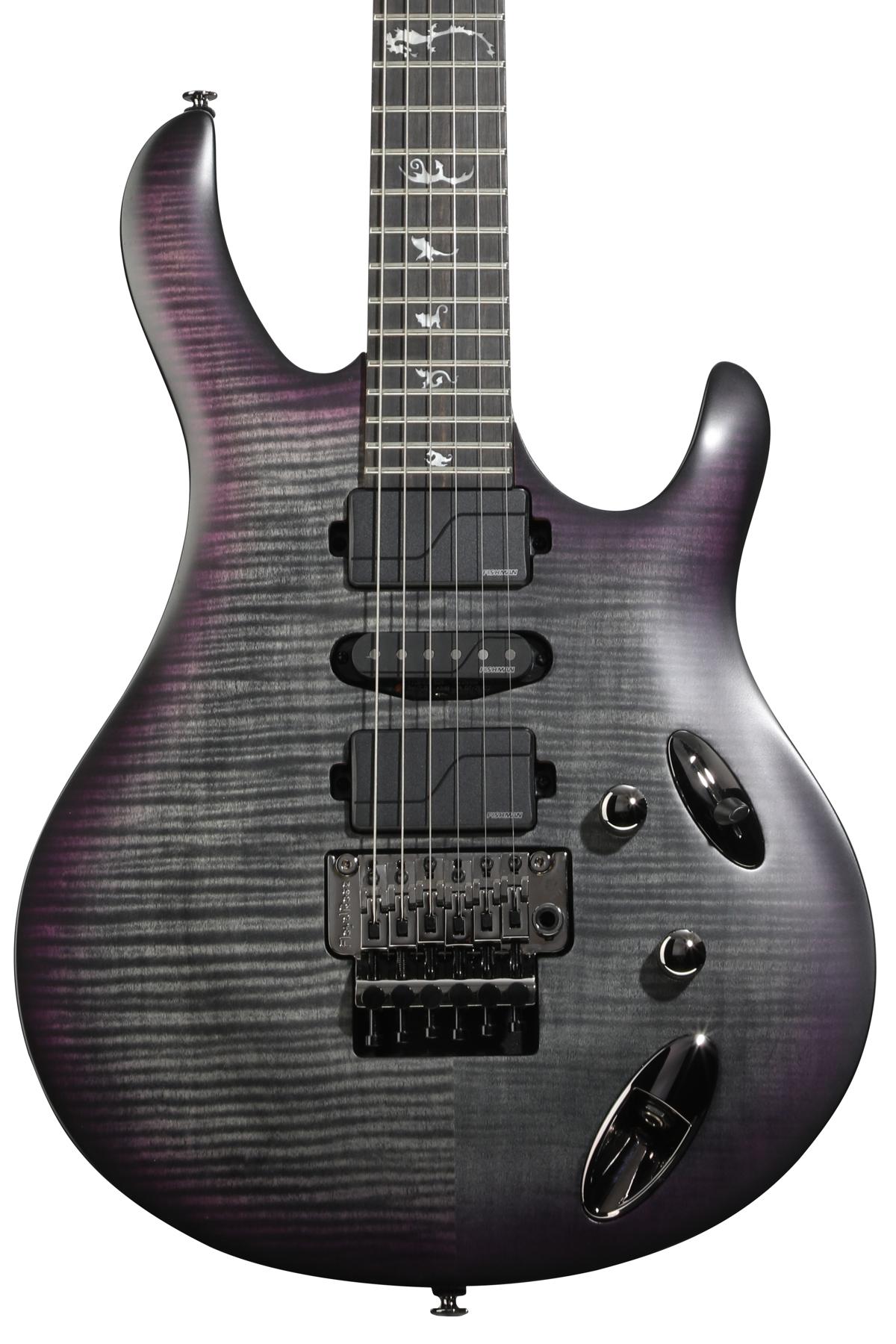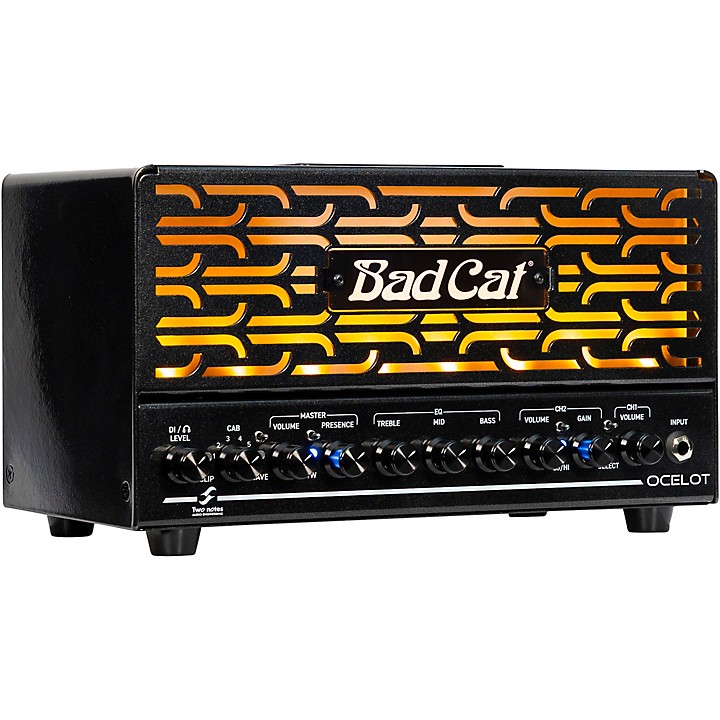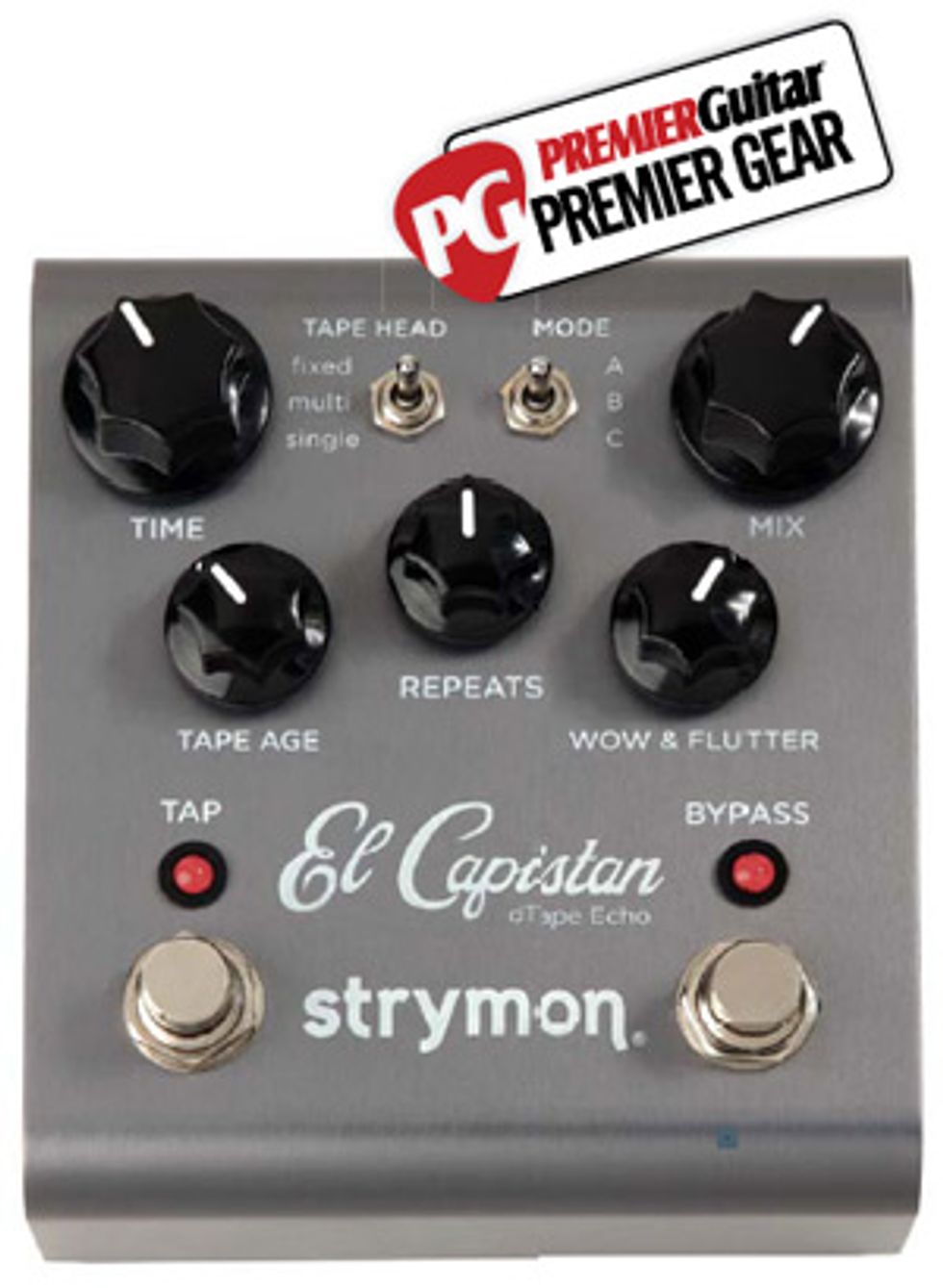 | |
| Download Example 1 Fixed Head. Fender Strat and Fender Twin Reverb reissue. | |
| Download Example 2 Multi-Head. Fender Strat and Fender Twin Reverb reissue. | |
| Download Example 3 Single Head. Gibson Les Paul Custom and Marshall JCM800 combo. | |
Features Fit for a King
Like the rest of Strymon’s pedal line, the El Capistan comes packed with parameter control options that will delight any serious tweaker. The controls common to most delay pedals—Time, Repeats, and Mix—are included. There’s also a Tape Age knob that adjusts the amount of simulated degradation in the repeats, effectively emulating the sound of tape heads rubbing against a worn out, scratched tape. The pedal’s Wow & Flutter knob alters the amount of modulation.
Two switches called Tape Head and Mode are located at the top of the control layout. Tape Head changes the type of emulated tape head, switching between Fixed head (vintage studio tape delays), Multi head (akin to a Roland Space Echo or Watkins Copicat), and Single moveable heads (like a Maestro Echoplex). The mode switch assigns different configurations to those head types: different head combinations on the Multi, tap tempo rates for the Fixed head, and tape speed or Echoplex-style sound-on-sound settings on the Single head. All of these options could leave any player dizzy with possibilities.
But Strymon didn’t stop there. Holding down the Bypass and Tap footswitches changes the function of each knob, creating a whole new menu of parameter controls, including low-end contour on delay repeats, simulated tape-bias variations, an internal spring reverb, and even simulated tape crinkle.
The El Capistan has stereo outputs, as well as a jack for an expression pedal, so if you run a dual amp rig, or like to record huge stereo guitar tracks, or want to change delay time on the fly with a pedal, you’re good to go.
Tone to Die For
I toyed with this overflowing box of time-warping possibilities using a 2008 Fender American Stratocaster and a Mesa/Boogie TransAtlantic head with matching 1x12 cabinet, and A/B’d the pedal with an old Roland RE-201 Space Echo.
Flipping to the Strymon’s Multi head setting and selecting Mode A, I played some light arpeggios and was pleasantly surprised at the unit’s touch sensitivity. When I really dug into the strings with a full band behind me, it was great to have the El Capistan feed off of my changing attack patterns, especially when I was laying back to create more space for the band I was jamming with.
I wanted to see just how well the pedal stood up to the famed Space Echo, so I hooked up a Morley A/B/Y switching box to toggle between the two. The pedal’s feel, response, and overall tone were often every bit as musical and organic as its venerable ancestor. In general, the signal coming back from the Space Echo’s tape was a little grainier, an effect I could approximate with the El Capistan’s Tape Age control. But when I needed a little more clarity to go with the irregularities and character, the El Cap delivered in ways the Space Echo could not approach.
The Verdict
Strymon’s application and refinement of DSP is impressive. Few analog creatures are as random and imperfect—and treasured for these imperfections— as tape delays. And you’d be hard-pressed to find a pedal that does a better job of making the musical aspects of such imperfections controllable, practical, and so expressive. The applications this pedal is capable of could fill a review many times this length. So, if you’re in the market for a great tape echo emulator, don’t hesitate to check out an El Capistan for yourself. It really doesn’t get much better than this.
Buy if...
you want one of the finest tape delay emulators on the market today.
Skip if...
only an original tape delay will do.
Rating...
Street $299 - Strymon - strymon.net |
| Tone Games 2010: 30 Stompboxes Reviewed | Next in TIME-BASED: Visual Sound GarageTone Axle Grease Delay |








![Rig Rundown: Russian Circles’ Mike Sullivan [2025]](https://www.premierguitar.com/media-library/youtube.jpg?id=62303631&width=1245&height=700&quality=70&coordinates=0%2C0%2C0%2C0)






